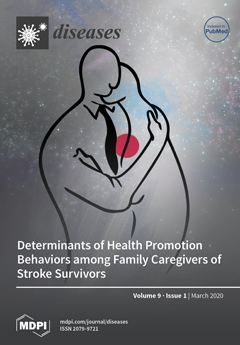Suspicion of failure in the effectiveness of artemisinin-based combination therapies (currently the first-line treatment of malaria, worldwide) is leading to the unofficial use of alternative antimalarials, including chloroquine and sulfadoxine/pyrimethamine, across northern Nigeria. To facilitate evidence-based resistance management, antimalarial resistance mutations were investigated
[...] Read more.
Suspicion of failure in the effectiveness of artemisinin-based combination therapies (currently the first-line treatment of malaria, worldwide) is leading to the unofficial use of alternative antimalarials, including chloroquine and sulfadoxine/pyrimethamine, across northern Nigeria. To facilitate evidence-based resistance management, antimalarial resistance mutations were investigated in
Plasmodium falciparum multidrug resistance-1 (
pfmdr1) and
chloroquine resistance transporter (
pfcrt), in isolates from Kano, northwestern Nigeria. Out of the 88 samples genotyped for
pfmdr1 N86Y mutation using PCR/restriction fragment length polymorphism, one sample contained the 86Y mutation (86Y
frequency = 1.14%). The analysis of 610 bp fragments of
pfmdr1 from 16 isolates revealed two polymorphic sites and low haplotype diversity (H
d = 0.492), with only 86 Y mutations in one isolate, and 184 F replacements in five isolates (184F
frequency = 31.25%). The analysis of 267 bp fragments of
pfcrt isolates revealed high polymorphism (H
d = 0.719), with six haplotypes and seven non-synonymous polymorphic sites. Eleven isolates (61.11%) were chloroquine-resistant, CQR (C
72V
73I
74E
75T
76 haplotype), two of which had an additional mutation, D
57E. An additional sequence was CQR, but of the C
72V
73M
74E
75T
76 haplotype, while the rest of the sequences (33.33%) were chloroquine susceptible (C
72V
73M
74N
75K
76 haplotype). The findings of these well characterized resistance markers should be considered when designing resistance management strategies in the northwestern Nigeria.
Full article






